 For Daily Job Alert For Daily Job Alert |
Join Our Whats App Channel |
 For Free Study Material For Free Study Material |
Join Our Telegram Channel |
Triangle & its various kinds of Centers
There are 4 very important ways of viewing the center of a triangle. We can look at its CENTROID, ORTHOCENTER, CIRCUMCENTER, and the INCENTER.
The centroid is the first center and is obtained by locating the intersection of the three medians of the triangle. The median of a triangle is obtained by joining each vertex with the midpoint of the opposite side. See the figure below.
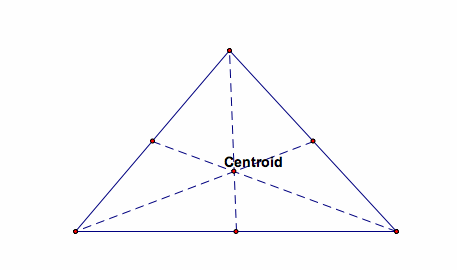
- It is the point of the intersection of the three median of the triangle. It is denoted by G.
- A centroid divides the area of the triangle in exactly three parts.

Medians:
- A line segment joining the midpoint of the side with the opposite vertex is called median.
- Median bisects the opposite side as well as divide the area of the triangle in two equal parts.
The second center of a triangle is the orthocenter. It is obtained by finding the intersection of the 3 altitudes of the triangle. An altitude is found by joining each vertex with the point on the opposite side that creates a perpendicular line with the opposite side. See the figure below.
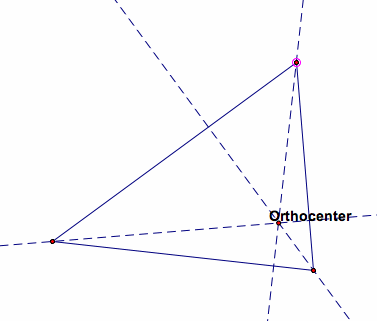
It is the point of intersection of all the three altitudes of the triangle.

∠BHC=180-∠A
∠AHB=180-∠C
∠AHC=180-∠B
Position of orthocentre inside the triangle:
Acute angled triangle: lies inside the triangle.
Obtuse angle triangle: lies outside the triangle on the backside of the obtuse angle. Orthocentre and circumcentre lie opposite to each other in obtuse angle triangle.
Right angle triangle: lies on the right angle of the triangle.
The third center is the circumcenter. The circumcenter is the intersection of the perpendicular bisectors of each side of the triangle. We can also think of this center as the point that is equidistant from each of the vertices. Since it is equidistant from each vertex, we can also construct a circle that passes through each vertex with the center being the circumcenter. See the figure below.
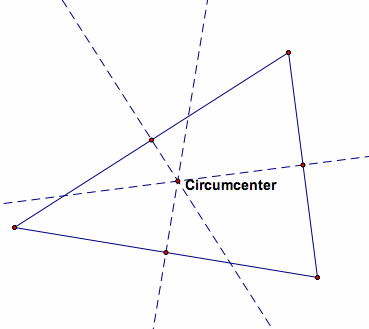

The distance between the circumcentre and the three vertices of a triangle is always equal.
OA=OB =OC=R(circumradius)=abc/4A
∠BOC=2∠A
∠AOC=2∠B
∠AOB=2∠C
Quantitative Aptitude Tricks Book Buy Now From Here Buy Now
Location of circumcentre in various types of triangle:
Acute angle triangle: Lies inside the triangle
Obtuse angle triangle: Lies outside the triangle
Right angle triangle: Lies at the midpoint of the hypotenuse.
The last center is the incenter. The incenter is found by first constructing the angle bisectors of each of the three angles. The incenter is the intersection of these 3 segments. See the figure below.
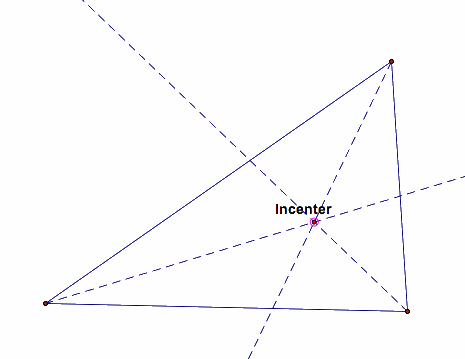

The distance of the in-centre from the all the three sides is equal(ID=IE=IF=inradius “r”)
In-radius (r)= Area of triangle/Semiperimetre=A/S
∠BIC = 90 +∠A/2
∠AIC=90+∠B/2
∠AIB=90+∠C/2
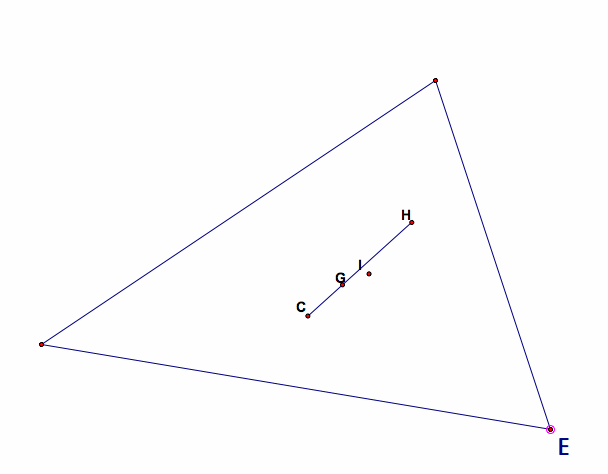
Notice that 3 of the 4 centers lie on a line segment. We call this segment the Euler Line. There are certain cases when all 4 points lie on the Euler Line and also a case where all 4 centers are the same point. Let’s now see what happens to the 4 centers as we examine different types of triangles.
First let’s look at an isosceles triangle:
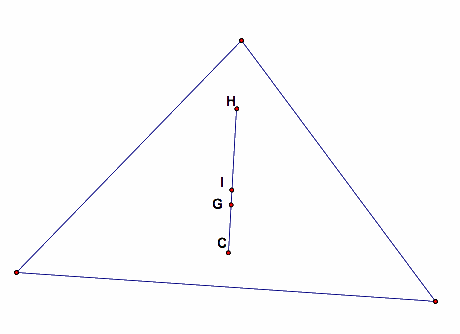
This triangle has 2 sides of equal length. You can see that in these types of triangles, all 4 centers lie on the Euler Line.
Equilateral Triangle:
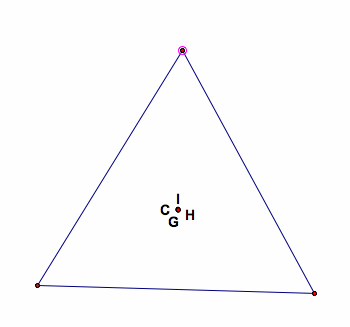
In this triangle, all 4 centers are the same point.
Obtuse triangle:
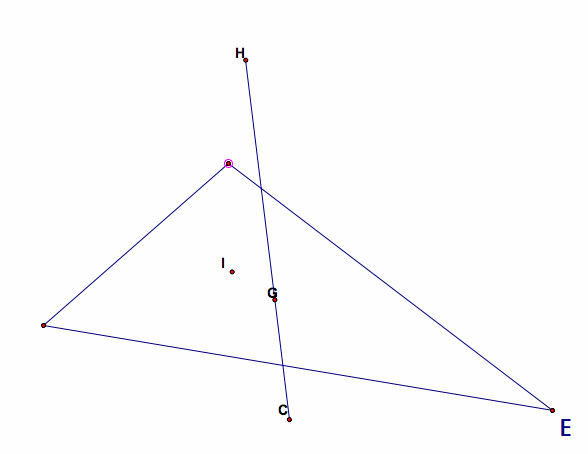
We still have the centroid, the orthocenter, and the circumcenter lying on the Euler line but now, the orthocenter and the circumcenter lie outside the triangle.
Acute Triangle:
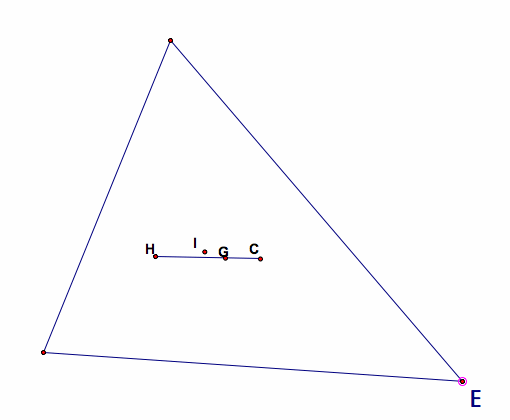
The triangle above has all 4 centers located within the triangle and the incenter, in this case, is not located on the Euler line. We could however construct an acute triangle on which the incenter does lie, if the acute triangle happens to also be isosceles.
Some important tricks are as follows:
(1)In a right angle triangle ABC,∠B=90° & AC is the hypotenuse of the triangle. The perpendicular BD is dropped on the hypotenuse AC from the right angle vertex B,
BD=AB*BC/AC
AD=AB2/AC
CD=BC2/AC
1/BD=1/AB2 +1/BC2
(2)The ratio of the areas of the triangles with equal bases is equal to the ratio of their heights.
(3)The ratio of the areas of two triangles is equal to the ratio of products of base and its corresponding sides.
Area (Triangle ABC)/Area (Triangle PQR) =AC*BD/PR*QS
(4)If two triangles have the same base and lie between the same parallel lines then the area of the two triangles will be equal.
Area of Triangle ABC= Area of Triangle ADB
(5)In a triangle ABC, AE, CD and BF are the medians then
3(AB2+BC2+AC2) = 4(CD2+BF2+AE2)
6)Sum of any two sides of the triangle is always greater than the third sides.
(7)The difference of any two sides of a triangle is always less than the third sides.











